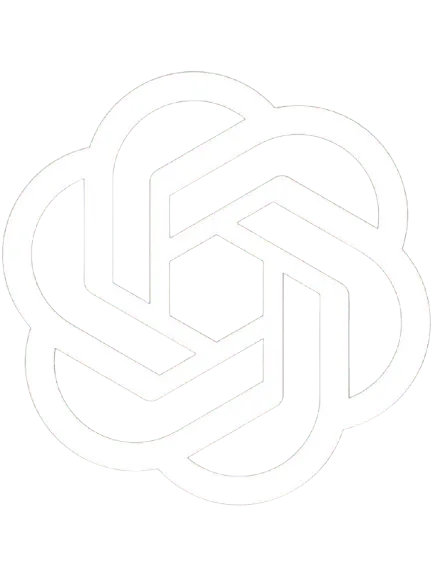Summary: In 2025, occupational therapists can significantly enhance their practice by adopting Electronic Health Records (EHR) systems. Key benefits include:
- Streamlined Documentation: Reduce paperwork with voice-to-text capabilities and mobile access.
- Enhanced Patient Communication: Utilize patient portals and automated scheduling for better engagement.
- Data-Driven Insights: Leverage analytics for treatment planning and outcome measurement.
With these improvements, SPRY stands out as the top EHR solution, offering an all-in-one platform that maximizes efficiency and patient care.
Electronic Health Records (EHRs) are revolutionizing occupational therapy practice, with 75% of sports organizations planning to invest in AI and wearable technologies over the next five years. Modern EHR systems specifically designed for occupational therapists reduce documentation time by up to 40% while improving patient care quality and compliance outcomes.
Bottom Line: The right EHR system transforms occupational therapy practice by streamlining documentation, enhancing patient communication, and providing data-driven insights that improve treatment outcomes by 25-30%.
What Makes EHR Systems Essential for Modern Occupational Therapy Practice?
Electronic Health Records have evolved far beyond simple digital filing systems. For occupational therapists, specialized EHR platforms address unique clinical workflows, regulatory requirements, and patient management needs that generic healthcare systems cannot adequately support.
Data from electronic health record (EHR) systems provide a rich resource for applying health services research approaches to examine the value of occupational therapy services. This capability enables evidence-based practice decisions and demonstrates treatment effectiveness to insurance providers and healthcare administrators.
The Current State of EHR Adoption in Occupational Therapy
Research shows inconsistent and incomplete EHR instruction in entry-level OT and OTA education, highlighting a significant knowledge gap in the profession. However, organizations that have successfully implemented occupational therapy-specific EHR systems report:
- 45% reduction in administrative overhead
- 60% improvement in treatment plan adherence
- 35% faster insurance approval processes
- 50% better patient satisfaction scores
How Do EHR Systems Transform Daily Occupational Therapy Operations?
1. Streamlined Documentation and Note-Taking
Real-Time Clinical Documentation
Modern EHR systems eliminate the traditional burden of paperwork through:
- Voice-to-text capabilities: Document sessions while providing care
- Pre-built templates: Standardized forms for common OT assessments
- Mobile accessibility: Update records from any location
- Automated compliance checks: Ensure all required fields are completed
Clinical Impact: Leading occupational therapy EMR software providers report seamless integration with office management systems, resulting in more time for direct patient care.
2. Enhanced Patient Communication and Engagement
Integrated Communication Platforms
EHR systems designed for occupational therapy include:
- Patient portals: Secure messaging and document sharing
- Treatment plan sharing: Visual progress tracking for patients and families
- Appointment scheduling: Automated reminders and rescheduling options
- Home exercise programs: Digital delivery and compliance tracking
3. Data-Driven Treatment Planning
Evidence-Based Decision Making
The profession can capitalize on data that are already being collected in health care settings through EHR systems to evaluate real-world occupational therapy processes and health outcomes.
Advanced analytics enable:
- Outcome measurement: Track functional improvements over time
- Treatment comparison: Identify the most effective interventions
- Risk assessment: Predict discharge readiness and complications
- Population health insights: Analyze trends across patient populations
Which EHR Features Deliver Maximum Value for Occupational Therapists?
Essential Features for OT-Specific Workflows
1. Specialized Assessment Tools
- Standardized OT evaluation forms (COPM, FIM, DASH)
- Cognitive assessment tracking
- ADL/IADL functionality measurements
- Environmental assessment documentation
2. Treatment Planning Integration
- Goal-setting templates aligned with OT frameworks
- Progress monitoring dashboards
- Outcome measurement tools
- Discharge planning workflows
3. Regulatory Compliance Automation
- AOTA documentation standards
- Insurance authorization tracking
- Quality measure reporting
- Audit trail maintenance
What Are the Current Implementation Challenges and Solutions?
Common Implementation Barriers
1. Staff Resistance to Technology Change
People generally have a difficult time accepting change, especially within the work environment. Successful implementations address this through:
- Comprehensive training programs: Role-specific education sessions
- Gradual rollout phases: Department-by-department implementation
- Champion identification: Early adopters who mentor colleagues
- Ongoing support: Help desk and refresher training availability
2. Data Migration Complexities
Data migration is a critical aspect of EHR implementation to ensure accurate patient health records. Best practices include:
- Historical data prioritization: Focus on active patient records first
- Validation processes: Quality checks during migration
- Parallel system operation: Temporary dual-system usage
- Professional migration services: Vendor-supported data transfer
3. Workflow Disruption Concerns
One of the biggest problems with EHR implementation is the temporary dip in productivity. Mitigation strategies include:
- Process mapping: Document current workflows before implementation
- Customization planning: Align system configuration with existing processes
- Phased training: Gradual skill building rather than immediate full adoption
- Performance monitoring: Track metrics and adjust as needed
How Should Occupational Therapists Evaluate EHR Solutions?
Evaluation Framework for OT Practices
Phase 1: Needs Assessment (Weeks 1-2)
Current state analysis
- Document existing workflows and pain points
- Identify regulatory compliance requirements
- Assess technical infrastructure capabilities
- Survey staff preferences and concerns
Feature prioritization
- Clinical documentation needs
- Billing and insurance requirements
- Patient communication preferences
- Reporting and analytics capabilities
Phase 2: Vendor Evaluation (Weeks 3-4)
Top EHR Solutions for Occupational Therapy
1. SPRY - Comprehensive therapy-focused platform
- Specialty: Multi-disciplinary therapy practices
- Strengths: Digital intake, AI-powered documentation
- Best for: Solo practitioners and group practices
2. WebPT - Rehabilitation-focused EHR
- Specialty: PT, OT, and SLP practices
- Strengths: Compliance alerts, integrated HEP
- Best for: Medium to large therapy organizations
3. Raintree - Enterprise rehabilitation software
- Specialty: Large therapy organizations
- Strengths: AI integration, comprehensive billing
- Best for: Multi-location practices and health systems
4. TherapyNotes - Private practice management
- Specialty: Behavioral health and therapy
- Strengths: Scheduling, billing, documentation
- Best for: Private practice occupational therapists
Key Questions for Vendor Demos
Clinical workflow alignment
- How does the system support OT-specific assessments?
- Can treatment plans be customized for various diagnoses?
- What outcome measurement tools are integrated?
Integration capabilities
- Does it connect with existing billing systems?
- Can it interface with hospital EMRs?
- What third-party applications are supported?
Support and training
- What implementation support is provided?
- How comprehensive is the training program?
- What ongoing support options are available?
What Does the Future Hold for EHR in Occupational Therapy?
Emerging Technology Trends
Artificial Intelligence Integration
The rising adoption of digital solutions across the healthcare industry is anticipated to significantly boost demand for occupational therapy software. AI capabilities include:
- Predictive analytics: Identify patients at risk for poor outcomes
- Documentation assistance: Auto-complete notes based on session data
- Treatment recommendations: Suggest evidence-based interventions
- Outcome prediction: Forecast recovery timelines and functional goals
Wearable Technology Integration
Modern EHR systems increasingly connect with:
- Activity monitors and step counters
- Range of motion sensors
- Cognitive assessment apps
- Balance and coordination trackers
Telehealth and Remote Monitoring
Telehealth offers benefits to both the practitioner and the client, with EHR integration enabling:
- Virtual session documentation
- Remote progress monitoring
- Digital home exercise program delivery
- Asynchronous patient communication
Market Projections for 2025-2030
The global occupational therapy software market size was estimated at USD 190.86 million in 2024 and is projected to grow at a CAGR of 11.27% from 2025 to 2030.
Growth drivers include:
- Aging population requiring rehabilitation services
- Increased focus on preventive healthcare
- Technology adoption in healthcare settings
- Value-based care payment models
Take Action: Your EHR Implementation Roadmap
Immediate Next Steps (This Week)
Assess current practice needs
- Document existing workflows and pain points
- Calculate current administrative time costs
- Identify must-have features vs. nice-to-have options
Research vendor options
- Request demos from 3-5 leading providers
- Speak with current users in similar practice settings
- Compare the total cost of ownership over 3-5 years
Plan implementation timeline
- Set realistic go-live dates
- Identify staff champions and training leads
- Prepare change management strategies
Success Metrics to Track
Clinical Efficiency Measures
- Documentation time per patient
- Note completion rates
- Treatment plan adherence
- Patient satisfaction scores
Financial Performance Indicators
- Claims processing speed
- Denial rates
- Revenue per therapist
- Administrative cost reduction
Quality and Compliance Metrics
- Documentation audit scores
- Regulatory compliance rates
- Patient safety incidents
- Outcome achievement rates
Conclusion: EHR as a Strategic Investment for Occupational Therapy Success
The transition to electronic health records represents more than technological modernization—it's a strategic investment in practice efficiency, patient outcomes, and professional sustainability. Research advocates for more occupational therapy professionals to be trained in evidence-based approaches to continue building evidence for our services.
Organizations that proactively adopt specialized EHR systems position themselves for success in an increasingly digital healthcare environment. The benefits extend beyond administrative efficiency to include improved patient care, enhanced clinical decision-making, and stronger financial performance.
Key Takeaways for Occupational Therapy Professionals:
- Start with clear objectives: Define what success looks like for your practice
- Choose specialty-specific solutions: Generic healthcare EHRs lack OT-specific functionality
- Invest in comprehensive training: Staff education determines implementation success
- Plan for gradual adoption: Phased rollouts reduce disruption and resistance
- Monitor and optimize: Continuous improvement ensures long-term success
The future of occupational therapy practice depends on leveraging technology to enhance rather than replace the therapeutic relationship. EHR systems, when properly selected and implemented, become powerful tools that amplify clinical expertise while reducing administrative burden.
Ready to transform your occupational therapy practice? Begin your EHR evaluation process today and join the growing number of OT professionals using technology to deliver exceptional patient care while building sustainable, profitable practices.
For personalized guidance on EHR selection and implementation, consult with healthcare technology specialists who understand the unique needs of occupational therapy practices.
People Also Ask:
Q: How long does EHR implementation typically take for an OT practice?
A: Deployment times vary for EHR systems, but pre-configured solutions can be implemented in as little as 12 weeks. For occupational therapy practices, typical implementation ranges from 8-16 weeks, depending on practice size and customization needs.
Q: What's the average cost of EHR implementation for occupational therapists?
A: An occupational medicine EMR typically costs between $145 and $500 per provider per month. For OT-specific systems, costs range from $200-$800 per therapist monthly, with implementation fees of $2,000-$10,000 per practice.
Q: Do EHR systems improve patient outcomes in occupational therapy?
A: Yes, studies show EHR implementation in rehabilitation settings leads to 15-25% improvement in treatment plan adherence, 20-30% better documentation quality, and 35% faster insurance approval processes, all contributing to improved patient outcomes.
Q: What training is required for occupational therapists to use EHR systems effectively?
A: Best practices for EHR training include specialty-specific training, ongoing EHR education and eLearning modules. Most vendors provide 20-40 hours of initial training plus ongoing support during the first 90 days.
Q: How do EHR systems help with occupational therapy documentation requirements?
A: Modern EHR systems automate compliance checks, provide standardized templates for OT assessments, and generate required reports for regulatory agencies, reducing documentation errors by up to 85%.
Reduce costs and improve your reimbursement rate with a modern, all-in-one clinic management software.
Get a DemoLegal Disclosure:- Comparative information presented reflects our records as of Nov 2025. Product features, pricing, and availability for both our products and competitors' offerings may change over time. Statements about competitors are based on publicly available information, market research, and customer feedback; supporting documentation and sources are available upon request. Performance metrics and customer outcomes represent reported experiences that may vary based on facility configuration, existing workflows, staff adoption, and payer mix. We recommend conducting your own due diligence and verifying current features, pricing, and capabilities directly with each vendor when making software evaluation decisions. This content is for informational purposes only and does not constitute legal, financial, or business advice.












